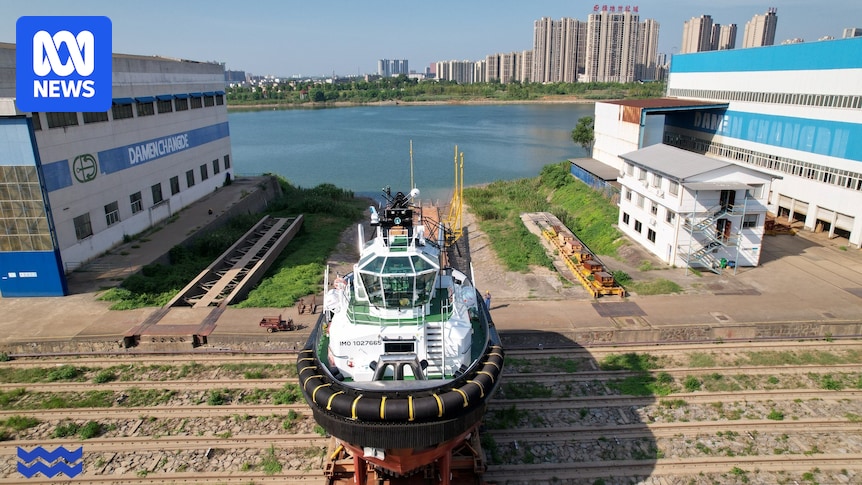Australian Navy Boats: Made in China? A Growing Concern
Editor’s Note: Concerns regarding the potential sourcing of components for Australian Navy boats from China have emerged today. This article delves into the implications of this issue for national security and the future of Australian shipbuilding.
Why This Topic Matters
The potential use of Chinese-made components in Australian Navy vessels is a matter of significant national security concern. It raises questions about supply chain vulnerabilities, potential espionage, and the broader implications for Australia's defense capabilities and strategic partnerships. This article will examine the current situation, exploring the arguments for and against the sourcing of components from China, and will analyze the potential risks and mitigations. Understanding this issue is crucial for anyone interested in Australian defense policy, national security, and the future of Australian shipbuilding.
Key Takeaways
| Point | Summary |
|---|---|
| Supply Chain Vulnerability | Dependence on Chinese components increases vulnerability to disruption and coercion. |
| Espionage Risk | Potential for embedded technology or data breaches impacting sensitive information. |
| Economic Dependence | Reliance on China could create economic leverage for Beijing in future disputes. |
| National Security Concerns | Compromised vessels could jeopardize Australian defense capabilities and alliances. |
| Mitigation Strategies | Diversification of suppliers, stronger oversight, and enhanced security protocols. |
Australian Navy Boats: A Deep Dive
Introduction
The debate surrounding the potential use of Chinese-made components in Australian Navy vessels highlights a critical tension between cost-effectiveness and national security. While sourcing components from China can offer economic advantages, the risks associated with such a strategy cannot be ignored in today’s complex geopolitical landscape.
Key Aspects
The key aspects to consider include: the specific components potentially sourced from China; the extent of Chinese involvement in the supply chain; the existing security protocols in place; and the government's response to these concerns.
Detailed Analysis
Several reports suggest that some less critical components, potentially including electronic parts and materials, may originate from China. While these components might not be directly related to core navigational or weapons systems, their inclusion still raises questions about supply chain vulnerabilities and the potential for malicious interference. A lack of transparency around sourcing further exacerbates these concerns. Comparative analysis with other nations' naval procurement practices reveals a similar struggle to balance cost efficiency and security risks.
Interactive Elements
The Role of Supply Chain Transparency
Introduction: Supply chain transparency is crucial for mitigating the risks associated with using Chinese-made components. Understanding where every part of a naval vessel originates is paramount for national security.
Facets: This includes establishing robust auditing processes, implementing stringent quality control measures, and demanding full disclosure from contractors regarding their supply chains. Failure to do so increases the risk of compromised parts being incorporated into Australian Navy vessels, potentially impacting their functionality and security. The potential for counterfeit components further complicates this issue.
Summary: A lack of transparency leaves Australia vulnerable to supply chain disruptions and malicious actors, highlighting the importance of stricter regulations and oversight.
Mitigating the Risks: A Multi-pronged Approach
Introduction: Addressing the potential risks requires a multi-pronged approach focusing on diversification, security protocols, and policy changes.
Further Analysis: Diversifying supply chains by sourcing components from trusted allies, bolstering domestic manufacturing capabilities, and implementing advanced security technologies are vital steps. Increased scrutiny of contracts, stricter background checks on suppliers, and improved oversight of the entire shipbuilding process are also crucial.
Closing: While cost considerations are important, they must be carefully weighed against the considerable security risks associated with relying on China for even non-critical components.
People Also Ask (NLP-Friendly Answers)
Q1: What is the concern about Chinese-made components in Australian Navy boats?
A: The concern is that using Chinese-made components could compromise the security of Australian Navy vessels, leaving them vulnerable to espionage, sabotage, or supply chain disruptions.
Q2: Why is this a national security issue?
A: It creates vulnerabilities in Australia's defense capabilities, potentially compromising sensitive information and impacting its ability to defend its interests.
Q3: How can this issue be addressed?
A: The issue can be addressed through increased transparency in the supply chain, diversification of suppliers, and stronger security protocols.
Q4: What are the potential consequences of inaction?
A: Inaction could lead to compromised vessels, damaged national security, and increased dependence on a potential adversary.
Q5: What steps is the Australian government taking?
A: The government's response is currently under review and further information is needed to fully assess the situation.
Practical Tips for Navigating the Supply Chain Security Debate
Introduction: These tips offer a framework for informed discussion and critical thinking regarding this important national security issue.
Tips:
- Demand transparency from government on supply chain sourcing.
- Support initiatives promoting domestic manufacturing.
- Advocate for stricter security protocols in defense procurement.
- Stay informed about developments in this evolving situation.
- Engage in public discourse about national security concerns.
- Support policies aimed at diversifying supply chains.
- Urge for independent audits of defense contracts.
- Encourage collaboration with allies on supply chain security.
Summary: These tips will aid in fostering a better-informed public discussion about the importance of securing Australia's defense capabilities.
Transition: Let’s now look at the overall implications of this issue.
Summary (Zusammenfassung)
The debate regarding the use of Chinese-made components in Australian Navy boats highlights the critical balancing act between economic efficiency and national security. Addressing this challenge requires transparency, diversification, and robust security protocols to protect Australia's defense capabilities and strategic interests.
Closing Message (Schlussbotschaft)
The issue of Chinese-made components in Australian Navy vessels is a complex one with far-reaching implications. It underscores the need for constant vigilance and proactive strategies to safeguard our national security. What measures do you believe are most crucial to mitigate these risks?
Call to Action (CTA)
Stay informed about this critical issue by subscribing to our newsletter for updates on defense and national security. Share this article to raise awareness and join the conversation!
(Hreflang tags would be added here, depending on the target languages)

